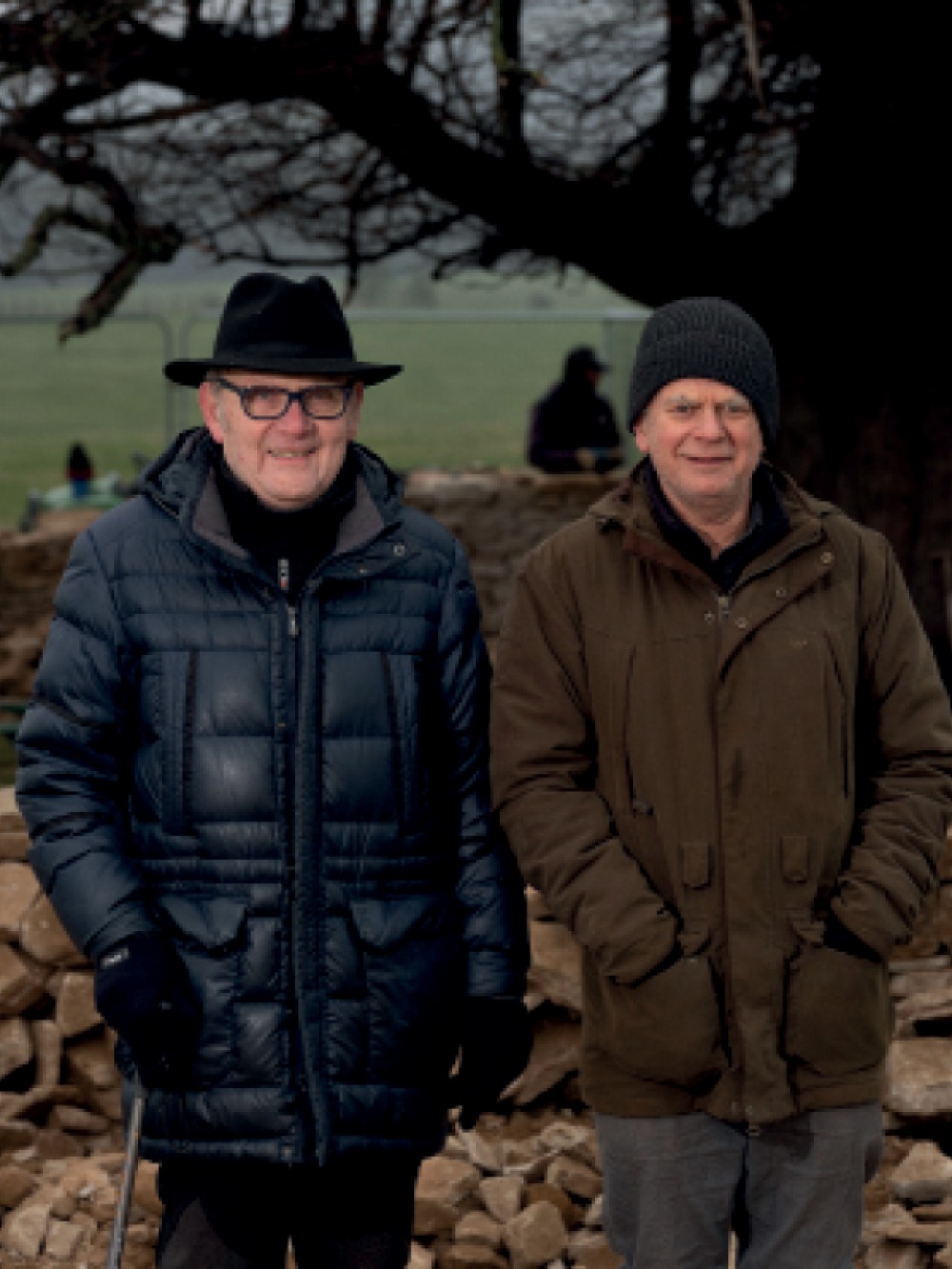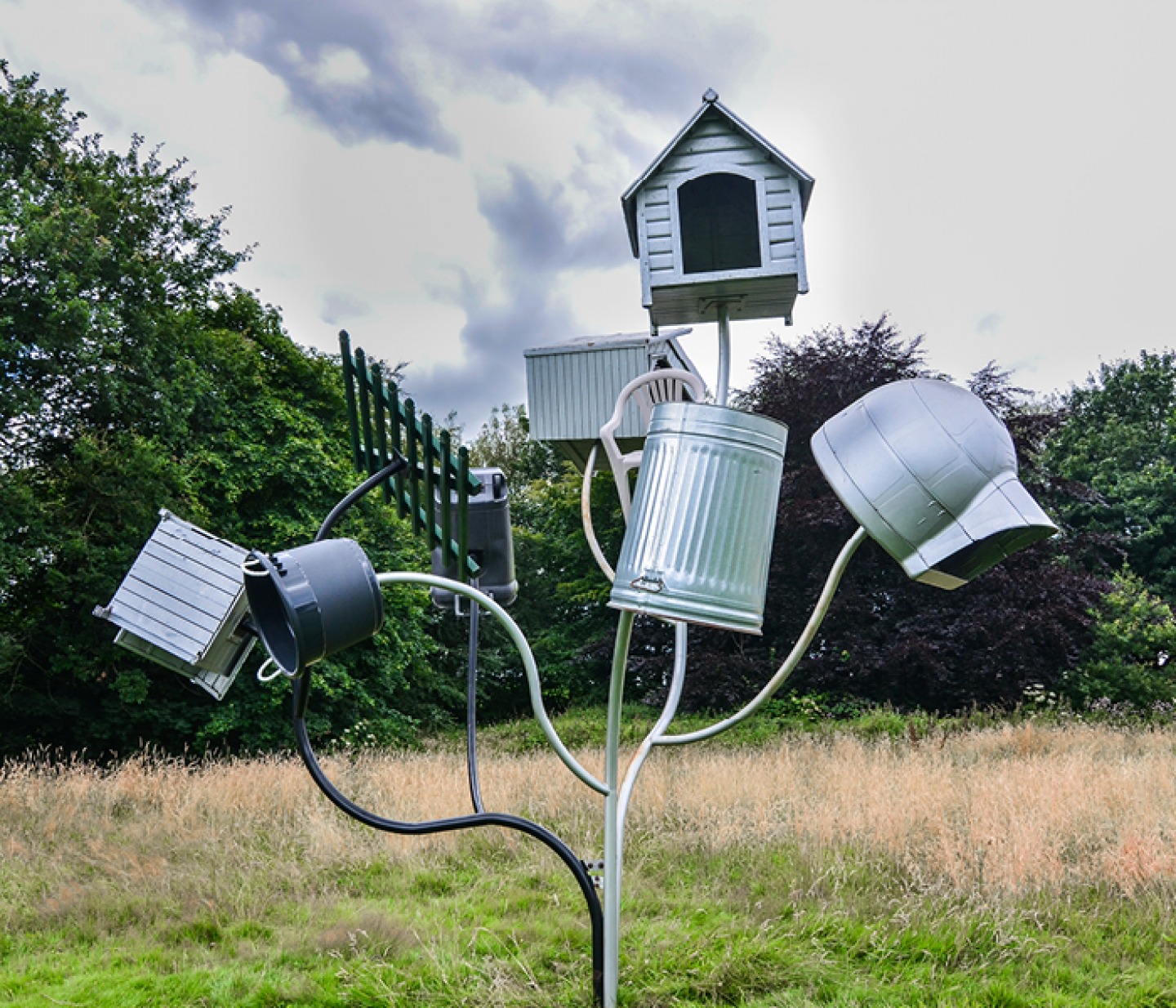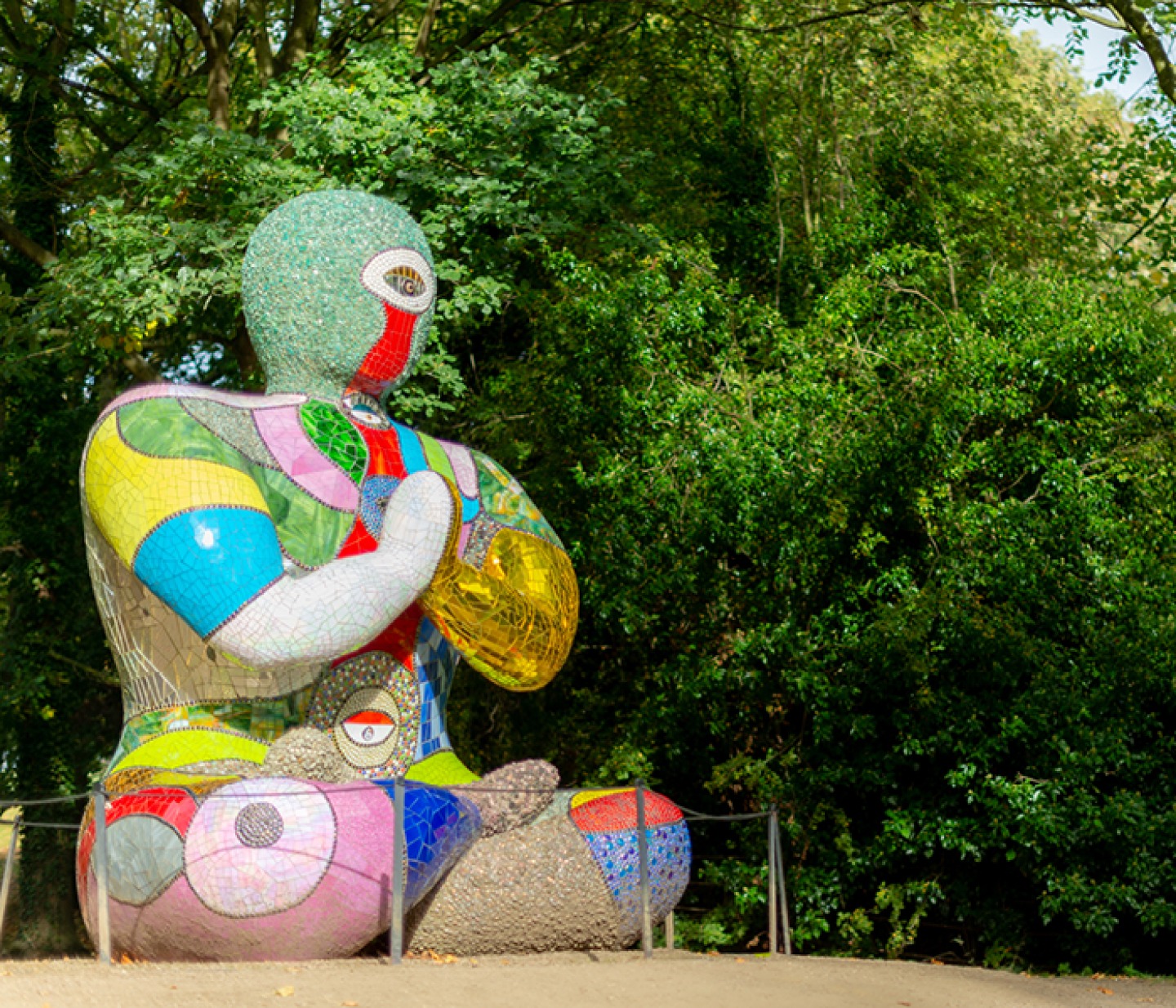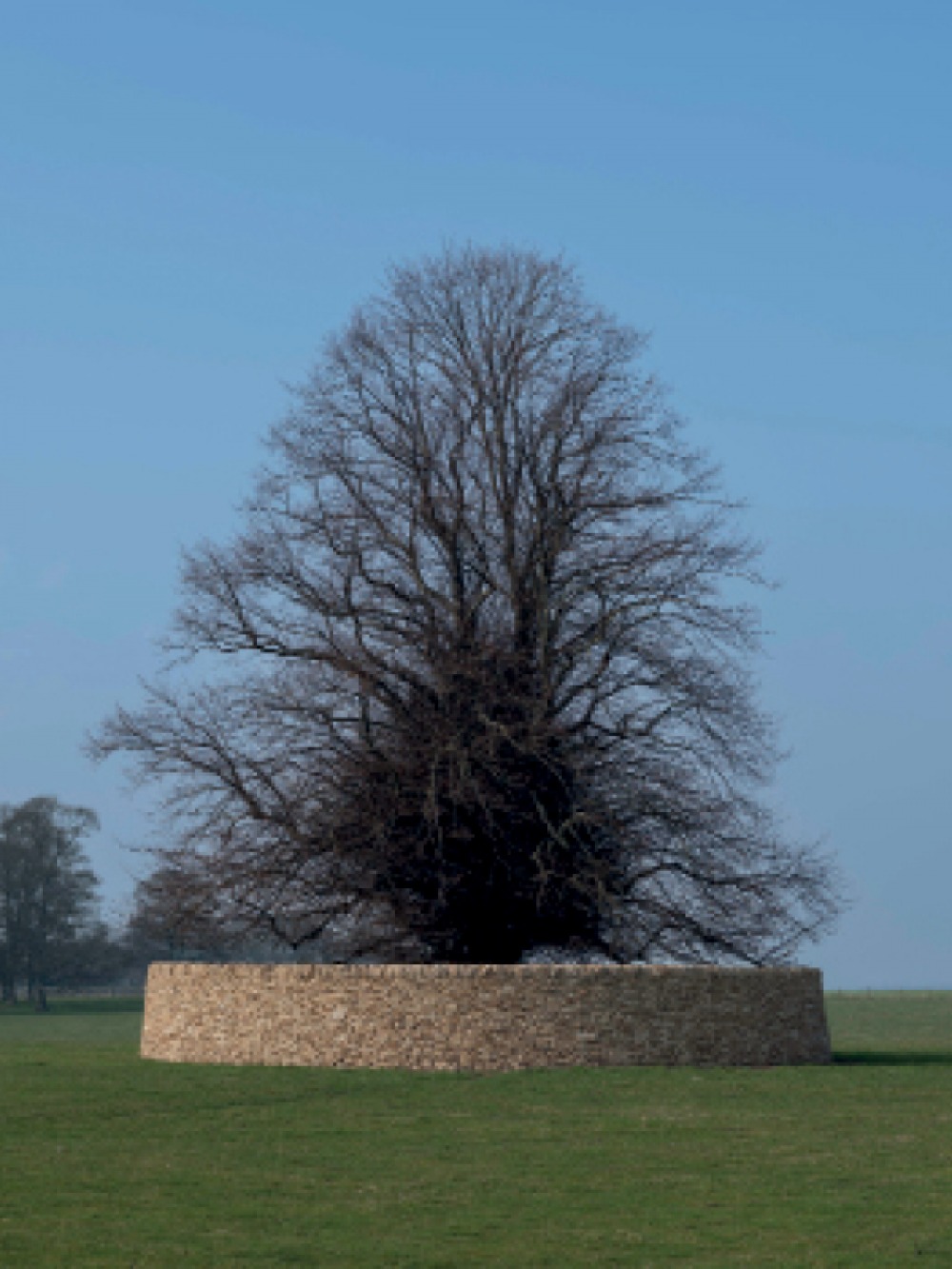Reflecting on 45 Years of Yorkshire Sculpture Park with Sir Peter Murray

Through the largest sculpture park of its kind in Europe, Sir Peter Murray has supported artists locally, nationally and internationally since the 1970s. Retiring with a knighthood, he reflects on 45 years as founding director of Yorkshire Sculpture Park

That’s all thanks to Sir Peter, who founded the park in 1977 with a grant of £1,000 – and no staff. He’s come a long way since then – as has the park. Born in Middlesbrough, he is proud of his working-class background. ‘Myself and my brothers were the first generation to go to college and university,’ he says.
He’s always had a passion for art and was always encouraged to draw and paint – he thanks his school art teacher for that. ‘It’s interesting, education, isn’t it? How important and inspirational teachers can be,’ he reflects. ‘My teacher was very encouraging. Coming from the background I did, it was difficult to persuade people to let you go to art college to become an artist, but he gave everyone a lot of confidence in terms of their potential and the possibilities in art and design.’ Following art college, then university, Peter shared his knowledge by teaching in schools before becoming principal lecturer in Art Education at Bretton Hall College. It was there that his plans for a sculpture park in Yorkshire took shape.
‘I’ve always been interested in education and making art accessible, so when I came to Bretton one idea I had was to put sculpture in the landscape to give children and students an opportunity to be able to see it outside a gallery setting,’ he recalls. ‘I worked on a number of projects like that with my students. We started to see, feel and understand the potential. There wasn’t a sculpture park in this country and it seemed to create a more relaxed atmosphere for viewing and appreciating art. The vision then was to provide opportunities for artists, and for the public to see great works of art here in Yorkshire. All of those things came together and I will say, without boasting too much, I think we have achieved that. Artists do enjoy working with the YSP, they benefit from YSP, and the public seem to really support, enjoy and love the YSP, and we contribute enormously to the education of children and students.’ Peter also wanted to demonstrate how art can contribute, not only to culture and education, but to the economy of the region. ‘Everyone thinks that art lives off the public purse, but we started YSP with no staff and no money and we now employ more than 200 and contribute at least £10 million to the regional economy each year. I think that’s a great achievement.’
Peter launched YSP in the grounds of the college, which at that time weren’t open to the public. There were plenty of obstacles to overcome, not least the lack of funding and staff. It’s only over time that people have realised the importance of the sculpture park in educating and inspiring, as Peter’s visions have come to life. ‘It hasn’t always been an upward projection; there’s been a lot of battles to achieve what we’ve achieved,’ Peter says. He uses organising an international sculpture conference in 1983 (bringing artists, speakers and delegates together from all over the world) as an example of the way the park gained global recognition over the years, which has transformed the park.
As the world has changed, YSP has had to adapt to continue its vital work. ‘We’ve now got more or less 500 acres of historic land which is open to the public,’ Peter explains. ‘That facility wasn’t there before the YSP came into fruition. It’s also changed in a sense that we started in the open air, but now we have a lot of buildings as well. We’ve built galleries, the visitor’s centre and two shops. We had hoped we’d be able to do something like that, but to develop them on the scale we have has been quite an achievement really.’
Rarely one to say ‘I’ and always a team player, Peter thanks his staff for the park’s success. Receiving a knighthood for his contribution to culture in the 2022 New Year Honours meant a great deal to him, but he dedicates that to his team. ‘The most important thing about the knighthood is that it’s an acknowledgement for what we’ve achieved,’ he says. ‘I really put the emphasis on “we”, because although it was my idea to start the sculpture park, I couldn’t have done this without the help of many, many people over several decades, some paid, and some not. I think the knighthood acknowledges that organic development and all those people. It’s also a recognition of the national status of the park, and a tribute to the staff as much as myself. They’re a very good team, really committed, and they make the sculpture park – I love them and I’ll miss that.’




YSP has worked with more than 1,000 artists from more than 40 countries, so it’s no wonder Peter struggles when asked to pick his favourites. ‘It’s too difficult because they’re my all favourites,’ he laughs. ‘Each one has a story. Each one has a connection with a particular experience or event. We certainly miss some of the pieces we’ve had in past exhibitions. There was Ursula von Rydingsvard, an American artist, and Magdalena Abakanowicz, a Polish artist – they had fantastic exhibitions here, and I’ll never, ever forget the work Magdalena produced. But I think, in many ways, they’re all great memories.
‘The pandemic meant we had to restrict numbers and the exhibition by Portuguese artist Joana Vasconcelos which we had when we reopened was amazingly popular. It was a terrific experience for people to come back to YSP and see these incredibly exciting and colourful sculptures. Another artist from way back, Yinka Shonibare, was successful too. Our recent exhibition by Robert Indiana was an absolute knockout. I suspect that’ll be one of our most popular exhibitions. The other one I’d mention, of course, is the Andy Goldsworthy exhibition we put on around 10 years ago. Everyone loved that.’
A new permanent outdoor artwork by Andy Goldsworthy, who has a long relationship with YSP, now marks Peter’s retirement: Peter’s Fold near the Longside Gallery. Folds have been made for hundreds of years as animal pens and Andy has developed the traditional fold to make contemporary sculptures. Peter’s Fold was made with ancient drystone techniques and the Yorkshire sandstone was sourced from Hillhouse Edge Quarry in Holmfirth.
Such site-specific pieces aren’t always easy to put on display in the park but, as Peter explains, smaller artworks can sometimes be just as difficult. ‘Bigger pieces, like those of Henry Moore, are more difficult because you need cranes to get them in, but smaller pieces can be tricky because you’ve got to be able to handle the work without damaging it, and you have to secure it,’ he explains. ‘Health and safety comes into almost every aspect. Some works can be quite fragile. But now we’ve got indoor spaces we can show works that aren’t strong enough to be outside. Some of the pieces we have are actually built on site, like the work of Andy Goldsworthy. Those are tricky pieces and they take a lot of putting together. You’ve got to work with architects and engineers to do that.’
Peter says the sculpture park, and Yorkshire as a whole, inspires artists as well as visitors. ‘Yorkshire is a very inspiring region, in terms of the arts,’ he reflects. ‘Certainly if you look at the poetry and the writing, and if you take a look at some of the artists who’ve emerged from Yorkshire, like David Hockney. But the two colossal figures in terms of sculpture are Henry Moore and Barbara Hepworth. They’re difficult to beat; they’re tremendous artists.
‘We didn’t start the sculpture park because they were born on our doorstep, but it certainly helped. Particularly internationally, people would refer to Yorkshire as a “cradle of contemporary sculpture”. The fact that those two artists were born here and always acknowledged their roots, and the contribution that Yorkshire and its landscape made to their development was understood and recognised by artists from other countries. The YSP’s landscape is terrific, and with our indoor and outdoor spaces, artists from across the world come and they’re really inspired by it all.’
But what does Peter love most about the sculpture park, aside from the great work it does in educating? ‘The landscape,’ he replies instantly. ‘It’s a wonderful landscape and being able to discover things within that means every day is different. Yesterday we were doing some photography and it was rainy and misty, and the day before that it was sunny. The same landscape changes by the minute, and the sculptures change with it.
‘That’s true of Yorkshire as a county too. I like the contrast in the landscape between the natural and the urban,’ Peter says. ‘It’s an incredibly inspiring place. I think Yorkshire, through its architecture, through its universities, through its landscape and history, has a huge amount to offer.’
Find out more about Yorkshire Sculpture Park and its current exhibitions at ysp.org.uk.







